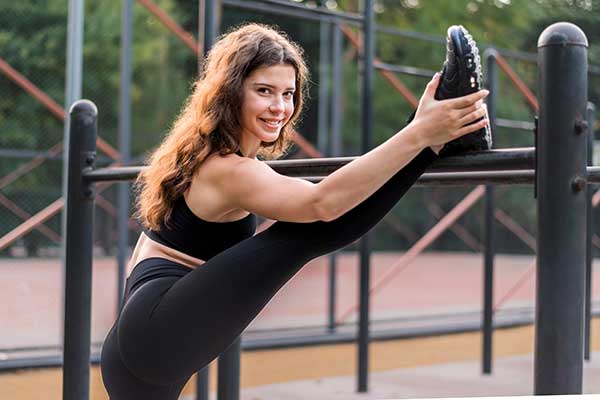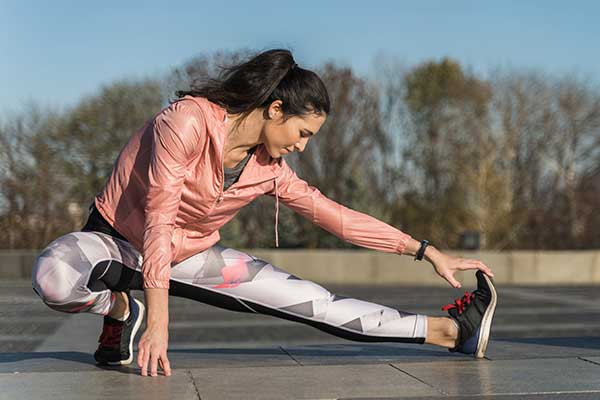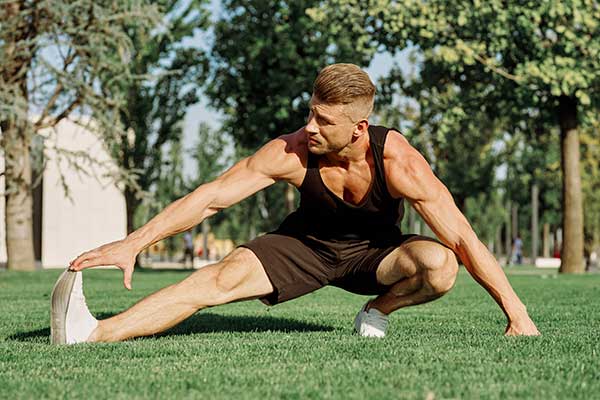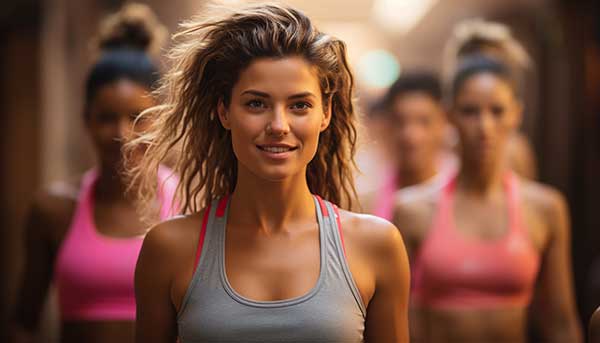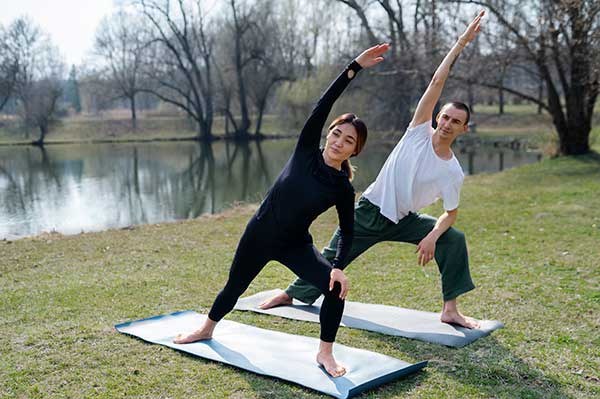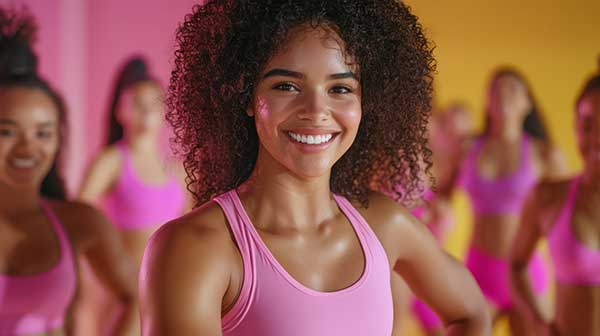Full Body Stretching Exercises
Introduction to the Importance of Stretching
Stretching is often the unsung hero of fitness routines. Many people jump straight into workouts, neglecting a crucial step that can enhance performance and prevent injuries. Full body stretching exercises are essential for everyone, from athletes to casual gym-goers. They help improve flexibility, increase blood flow, and promote relaxation.
Imagine feeling more limber as you tackle your daily activities or enjoy a workout without discomfort. Stretching not only prepares your muscles but also aids in recovery afterward. Whether you’re looking to boost athletic performance or simply want to feel better in your skin, incorporating full body stretching exercises into your routine can make all the difference. Let’s dive deeper into why these stretches matter and how you can integrate them easily into your life!
Benefits of Full Body Stretching Exercises
Full body stretching exercises offer a multitude of benefits that extend beyond flexibility. They enhance overall mobility, making everyday activities easier and more enjoyable.
These stretches can significantly reduce muscle tension. By promoting relaxation, they help alleviate stress built up in the body after long hours of sitting or strenuous workouts.
Improved circulation is another advantage. Stretching increases blood flow to muscles, helping them recover faster and reducing soreness from exercise.
Incorporating full body stretches into your routine fosters better posture as well. This is essential for maintaining spinal health and preventing discomfort in areas like the neck and back.
Moreover, these exercises boost athletic performance by preparing muscles for movement. A well-stretched body can react quickly during sports or physical activities, leading to enhanced coordination and agility.
Regular stretching promotes mental clarity by encouraging mindfulness through focused breathing techniques intertwined with each movement.
How to Properly Warm Up and Cool Down for Stretching
Warming up before stretching is essential. It gets your blood flowing and prepares your muscles for the workout ahead. Start with light aerobic activity. A brisk walk or gentle jog for about five to ten minutes works wonders.
Next, focus on dynamic movements that mimic the stretches you’ll perform later. Arm circles, leg swings, and torso twists are great options. These movements increase flexibility while reducing the risk of injury.
Cooling down is just as important as warming up. After you complete your stretching routine, take a few moments to lower your heart rate gradually. Walking slowly can help ease this transition.
Finish with static stretches held for 15-30 seconds each. This helps maintain muscle length and improve overall flexibility over time. Remember to breathe deeply throughout both processes; it enhances relaxation and effectiveness in each stretch performed.
Full Body Stretching Routine for Beginners
Starting a full body stretching routine as a beginner can be both exciting and rejuvenating. It’s important to choose stretches that are accessible yet effective.
Begin with the classic neck stretch. Gently tilt your head toward one shoulder and hold for 15-20 seconds. Switch sides to release tension in those tight muscles.
Next, try standing forward bends. Stand tall and slowly reach down toward your toes, letting gravity do its work. This helps loosen up the hamstrings and lower back.
Don’t forget about arm circles! Stretch out your shoulders by extending your arms at your sides and making small circles, gradually increasing their size.
Finish off with seated butterfly stretches, pressing the soles of your feet together while leaning forward gently. This opens up the hips beautifully, providing flexibility where it’s often needed most.
Incorporate these movements into a consistent routine to enhance overall mobility and wellness.
Advanced Full Body Stretching Exercises
Advanced full body stretching exercises take your flexibility and mobility to the next level. They challenge your range of motion while promoting overall muscle health.
One effective stretch is the Pigeon Pose. This yoga move opens up the hips deeply, helping to alleviate tension from hours of sitting or strenuous workouts.
Another great option is the Scorpion Stretch, which targets the spine and chest. As you lie face down, bend one knee and lift it towards your opposite shoulder. It’s a fantastic way to improve thoracic rotation.
Incorporating dynamic stretches like leg swings can also be beneficial. These movements activate muscles throughout your lower body, preparing them for more intense activities.
Remember to listen to your body during these advanced routines. Each stretch should feel challenging yet comfortable—never forced or painful.
Common Mistakes to Avoid While Stretching
Stretching can be incredibly beneficial, but it’s easy to make mistakes that could hinder your progress or even lead to injury. One common error is rushing through stretches. Take your time and hold each stretch for at least 15-30 seconds to allow your muscles to relax.
Another mistake is bouncing during stretches. This can create tension rather than alleviating it and may cause strain on the muscles. Instead, focus on smooth, controlled movements.
Neglecting proper breathing is also a frequent oversight. Deep breaths help release tension in the body and enhance flexibility.
It’s crucial not to push beyond your limits. Stretch until you feel a gentle pull but stop if you experience pain—listening to your body is essential for safe stretching.
Skipping warm-ups increases the risk of injury. Prepare your muscles with light activity before diving into full-body stretching exercises for effective results.
Incorporating Stretching into Your Daily Routine
Incorporating full body stretching exercises into your daily routine can be simple and rewarding. Start with just a few minutes each morning to wake up your muscles. This sets a positive tone for the day ahead.
Consider adding stretches during breaks at work. Standing or seated stretches can relieve tension, improve focus, and enhance productivity. Even a quick five-minute session makes a difference.
Another great opportunity is post-workout recovery. After any physical activity, dedicate time to stretch major muscle groups. This helps prevent stiffness and keeps you agile.
Make it enjoyable by pairing stretches with calming music or practicing in nature when possible. Involving friends or family members can also make it more engaging.
Listen to your body as you integrate these practices; adjust based on how you’re feeling each day for sustainable results that fit seamlessly into your life.
Conclusion: The Importance of Listening to Your Body When It Comes to Stretching
Stretching is a personal journey. Each body reacts differently to various movements and stretches. It’s essential to pay attention to what feels right for you. Listening to your body can prevent injuries and enhance your overall flexibility.
If something doesn’t feel comfortable, it’s okay to adjust or skip that stretch altogether. Take note of how your muscles respond during each session. This awareness will help you grow stronger and more flexible over time.
Remember, the goal of full body stretching exercises is not just about achieving greater range but also about enjoying the process itself. Embrace the experience, celebrate small milestones, and always prioritize self-care in your routine. Stretch wisely!
- About the Author
- Latest Posts
Johnnie D. Jackow Sr., the founder and CEO of Total Body Fitness, Worldwide, has a long-standing career in the fitness industry. He began as a certified personal trainer in the mid-90s and soon after authored his first weight loss book in 1998. This led to the launch of Total Body Fitness, Nationwide in the USA at the same time. Johnnie gained recognition as the fitness guru of his time, running infomercials on local TV late at night in Houston, Texas. Over the years, he has helped more than 40,000 individuals from all over the world achieve their health and fitness goals. With over 60,000 hours of documented training in integrative functional medicine, he completed his PhD in human physiology in 2010. His primary objective is to assist people in reaching their health and fitness goals through alternative approaches rather than relying solely on conventional medicine and pharmaceutical drugs. Today, with almost three decades of experience under his belt, Johnnie continues to be a leader in health and fitness.

